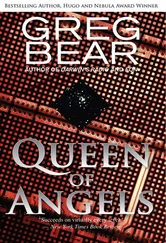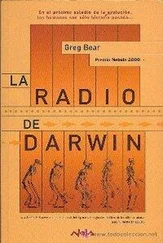They were like his children, all of them. And they had turned out to be exceptional.
He felt a rush of guilt and nausea as he turned on a gas burner and applied each dish of altered E. coli to the flame with a pair of tongs.
He returned to his lab and dropped the culture dishes into a sterilizing bath. That was the limit He could not destroy anything more. He felt a hatred for Harrison that went beyond any emotion he had ever felt toward another human. Tears of frustration blurred his vision.
Vergil opened the lab Kelvinator and removed a spinner bottle and a white plastic pallet containing twenty-two test tubes. The spinner bottle was filled with a straw-colored fluid, lymphocytes in a serum medium. He had constructed a custom impeller to stir the medium more effectively, with less cell damage—a rod with several half-helical Teflon “sails.”
The test tubes contained saline solution and special concentrated serum nutrients to support the cells while they were examined under a microscope.
He drew fluid from the spinner bottle and carefully added several drops to four of the tubes on the pallet. He then placed the bottle back on its base. The impeller resumed spinning.
After warming to room temperature—a process he usually aided with a small fan to gently blow warmed air over the pallet—the lymphocytes in the tubes would become active, resuming their development after being subdued by the refrigerator’s chill.
They would continue learning, adding new segments to the revised portions of their DNA. And when, in the normal course of cell growth, the new DNA was transcribed to RNA, and the RNA served as a template for production of amino acids, and the amino acids were converted to proteins…
The proteins would be more than just units of cell structure; other cells would be able to read them. Or RNA itself would be extruded to be absorbed and read by other cells. Or—and this third option had presented itself after Vergil inserted fragments of bacterial DNA into the mammalian chromosomes segments of DNA itself could be removed and passed along.
Every time he thought of it, his head whirled with possibilities, thousands of ways for the cells to communicate with each other and develop their intellects.
The idea of an intellectual cell was still wonderfully strange to him. It made him stop and stand, staring at the wall, until he jerked back to attention and continued his work.
He pulled up a microscope and inserted a pipette into one of the tubes. The calibrated instrument drew up the dialed amount of fluid and he expelled it into a thin circular ring on a glass slide.
From the very beginning, Vergil had known his ideas were neither far-out nor useless. His first three months at Genetron, helping establish the silicon-protein interface for the biochips, had convinced him the project designers had missed something very obvious and extremely interesting.
Why limit oneself to silicon and protein and biochips a hundredth of a millimeter wide, when in almost every living cell there was already a functioning computer with a huge memory? A mammalian cell had a DNA complement of several billion base pairs, each acting as a piece of information. What was reproduction, after all, but a computerized biological process of enormous complexity and reliability?
Genetron had not yet made the connection, and Vergil had long ago decided he didn’t want them to. He would do his work, prove his point by creating billions of capable cellular computers, and then leave Genetron and establish his own lab, his own company.
After a year and a half of preparation and study, he had begun working at night on the gene machine. Using a computer keyboard, he constructed strings of bases to form codons, each of which became the foundation of a rough DNA-RNA-protein logic.
The earliest biologic strings had been inserted into E. coli bacteria as circular plasmids. The E. coli had absorbed the plasmids and incorporated them into their original DNA. The bacteria had then duplicated and released the plasmids, passing on the biologic to other cells. In the most crucial phase of his work, Vergil had used viral reverse-transcriptase to fix the feedback loop between RNA and DNA. Even the earliest and most primitive biologic-equipped bacteria had employed reverse transcriptase as “encoders,” ribosomes as “readers,” and RNA as “tape.” With the loop in place, the cells developed their own memory and the ability to process and act upon environmental information.
The real surprise had come when he tested his altered microbes. The computing capacity of even bacterial DNA was enormous compared to man-made electronics. All Vergil had to do was take advantage of what was already there-just give it a nudge, as it were.
More than once, he had the spooky feeling that his work was too easy, that he was less a creator and more a servant…This, after having the molecules seem to fall into their proper place, or fail in such a way that he clearly saw his errors and knew how to correct them.
The spookiest moment of all came when he realized he was doing more than creating little computers. Once he started the process and switched on the genetic sequences which could compound and duplicate the biologic DNA segments, the cells began to function as autonomous units. They began to “think” for themselves and develop more complex “brains.”
His first E. coli mutations had had the learning capacity of planarian worms; he had run them through simple T-mazes giving sugar rewards. They had soon outperformed planarians. The bacteria—lowly prokaryotes—were doing better than multicellular eukaryote! And within months, he had them running more complex mazes at rates—allowing for scale adjustments comparable to those of mice.
Removing the finest biologic sequences from the altered E. coli , he had incorporated them into B-lymphocytes, white cells from his own blood. He had replaced many intron strings—self-replicating sequences of base pairs that apparently did not code for proteins and that comprised a surprising percentage of any eukaryotic cell’s DNA-with his own special chains. Using artificial proteins and hormones as a method of communication, Vergil had “trained” the lymphocytes in the past six months to interact as much as possible with each other and with their environment—a much more complex miniature glass maze. The results had been far better than he expected.
The lymphocytes had learned to run the maze and obtain their nutritional rewards with incredible speed.
He waited for the sample to warm up enough to be active, then inserted the eyepiece into a video pickup and switched on the first of four display screens mounted in the rack over the counter. There, very clearly, were the roughly circular lymphocytes in which he had invested two years of his life.
They were busily transferring genetic material to each other along straw-shaped tubes rather like bacterial pili. Some of the characteristics picked up during the E. coil experiments had stayed with the lymphocytes, just how he wasn’t yet sure. The mature lymphocytes were not reproducing by themselves, but they were busily engaged in an orgy of genetic exchange.
Every lymphocyte in the sample he was watching had the potential intellectual capacity of a rhesus monkey. From the simplicity of their activity, that certainly wasn’t obvious; but then, they’d had it pretty easy throughout their lives.
He had talked to them on as high a level of chemical training and had built them up as far as he was going to. Their brief lives were over—he had been ordered to kill them. That would be simple enough. He could add detergent to the containers and their cell membranes would dissolve. They would be sacrificed to the caution and shortsightedness of a group of certifiable flatworm management-types.
Читать дальше












